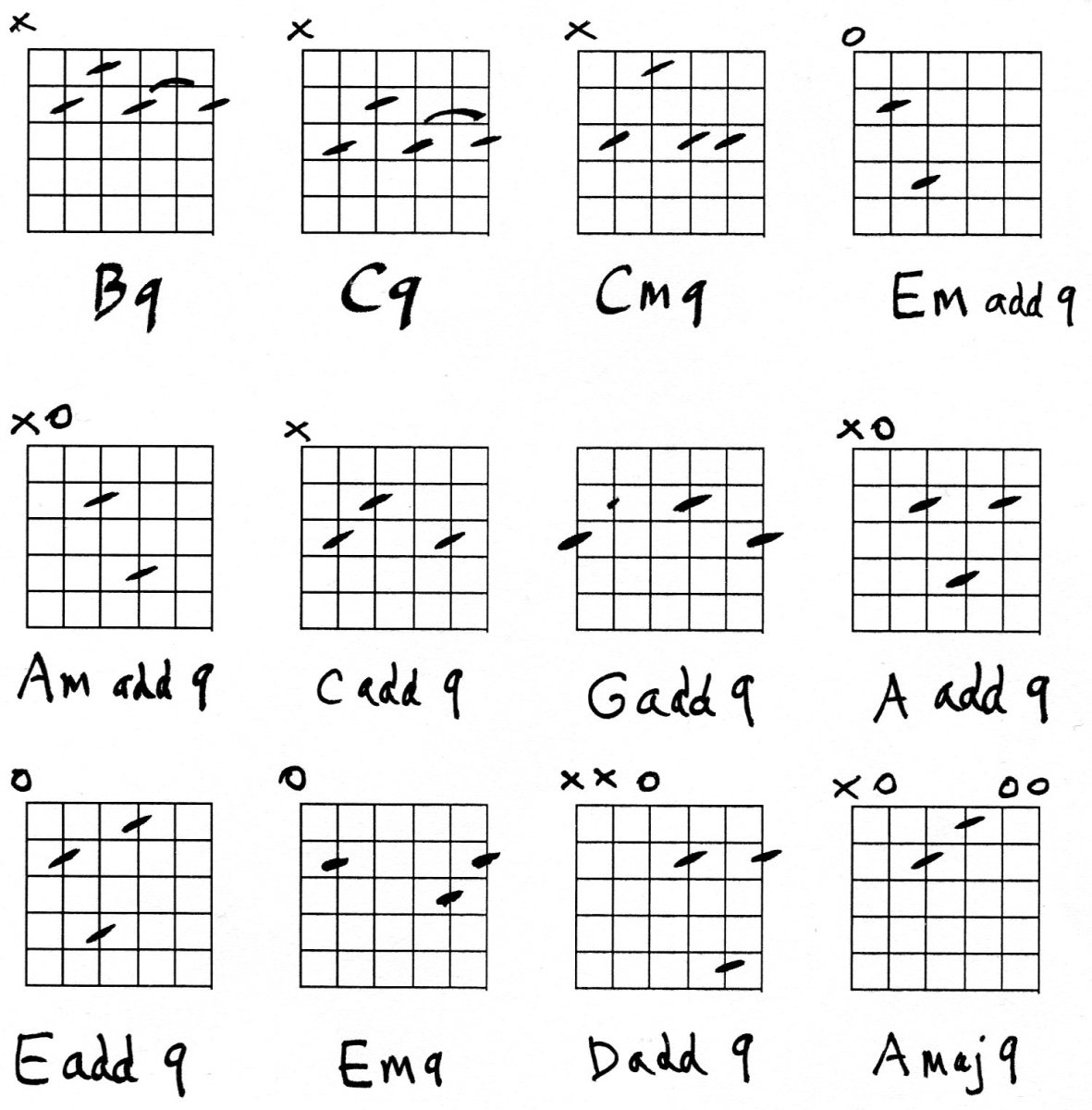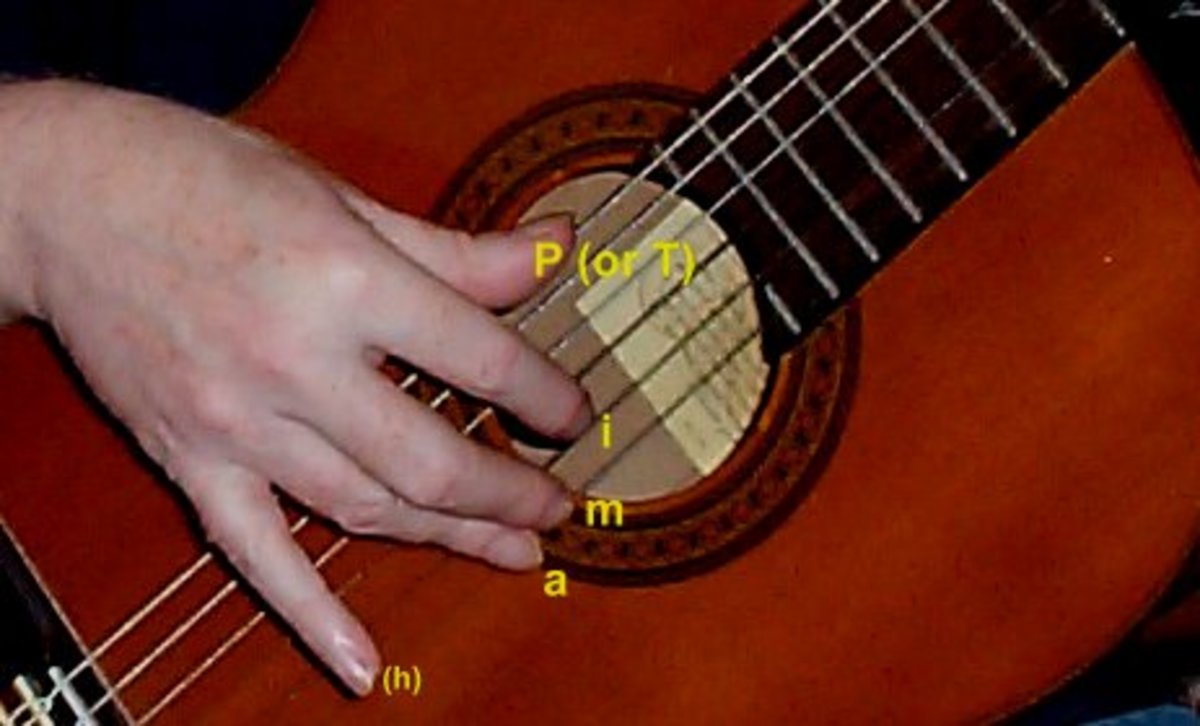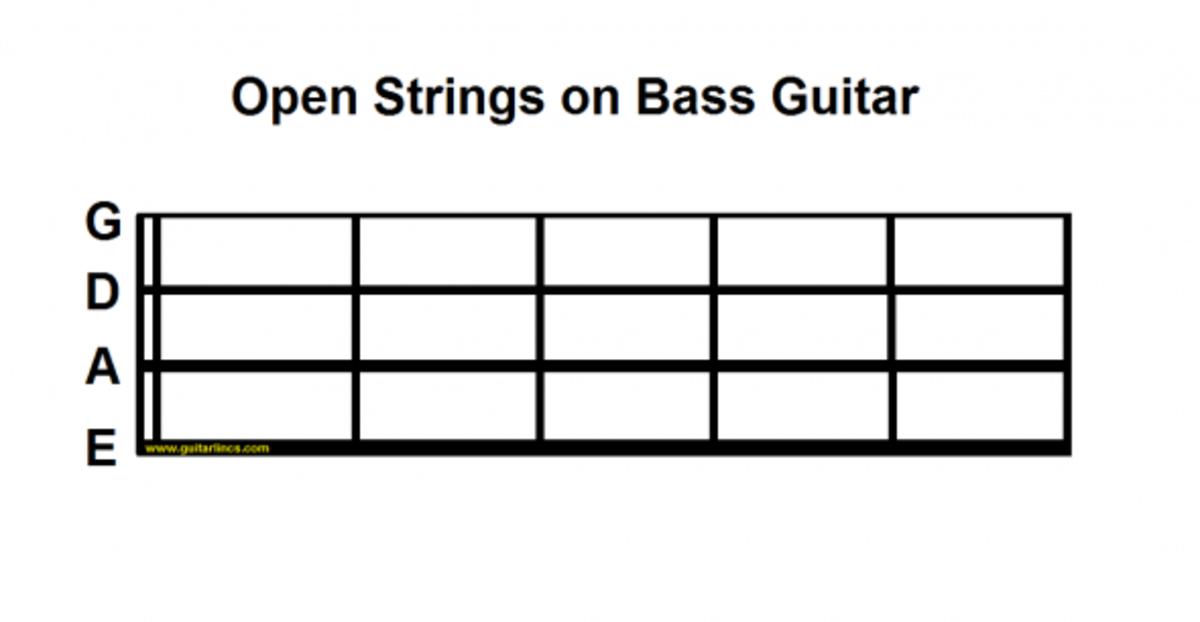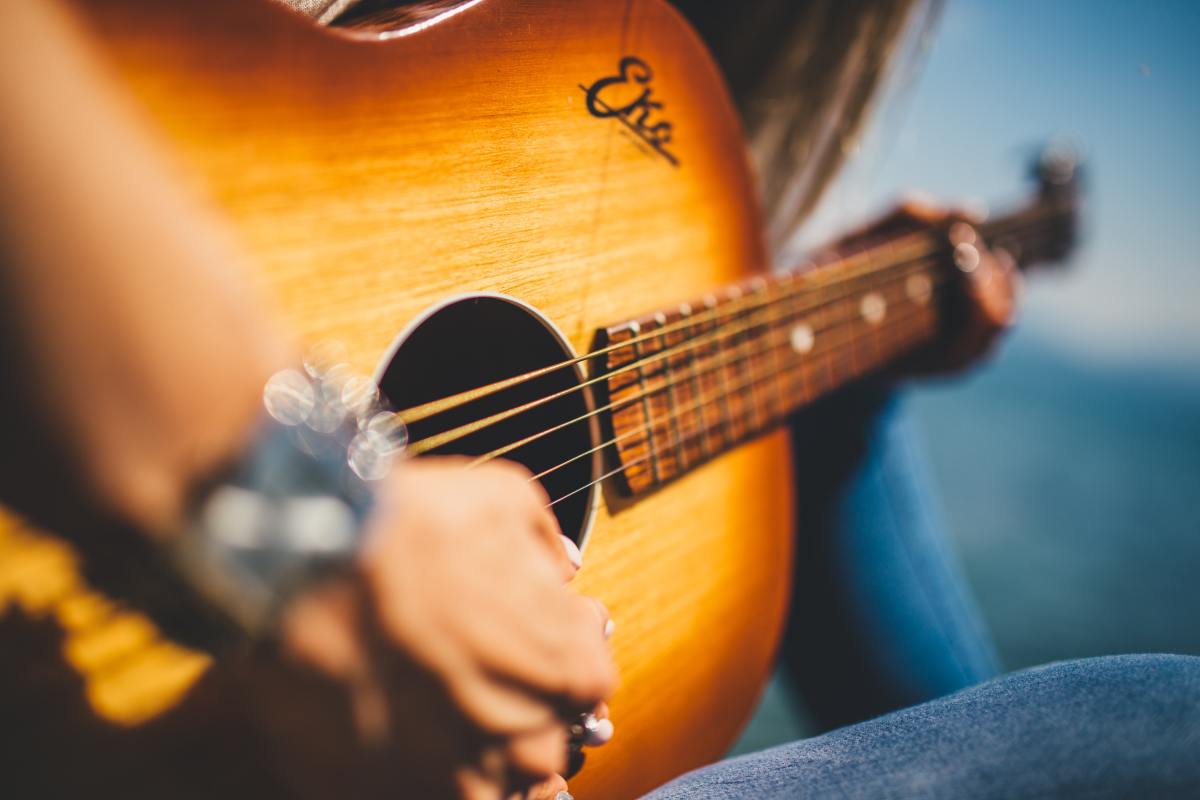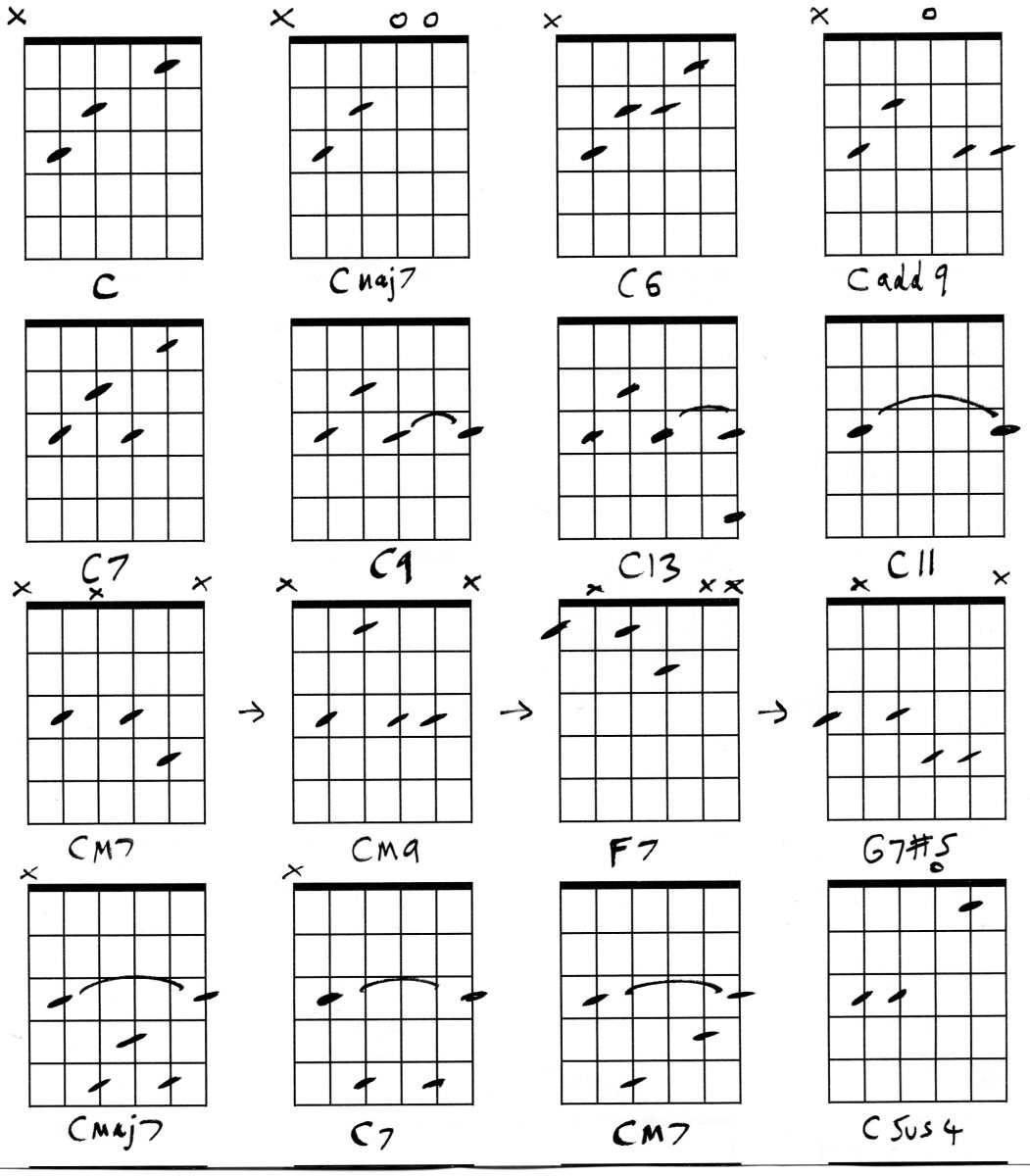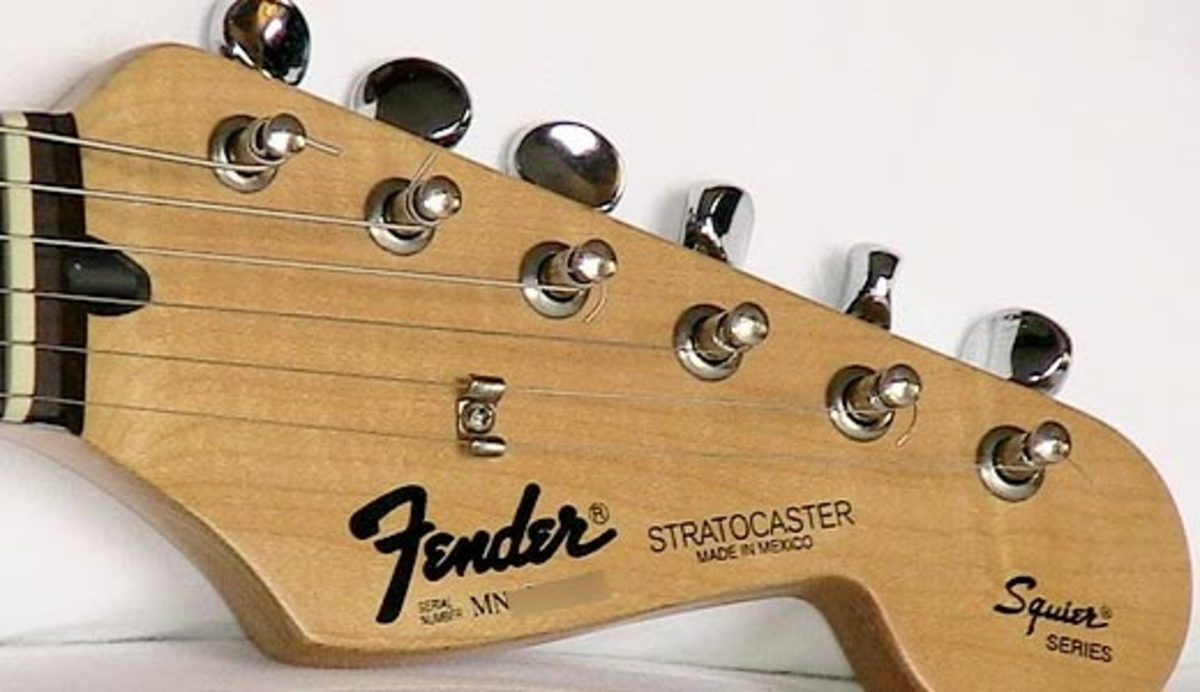Learn to Improvise on the Guitar
Learn to improvise on the guitar
This is a very first lesson in improvising guitar. You can use this lesson on acoustic, electric or classical guitars. You don't need to be an expert to use this lesson, but you do have to be able to understand guitar box diagrams. This is all in open position, later lessons will focus on movable scales and chords.
If you play songs on your guitar already you will have seen chord boxes. Maybe you have seen them drawn upright, my boxes are drawn on the side so they tie in with guitar TAB, it is a simple rotation though. If you know the chords Em, G, Am and C that may be helpful.
Guitar and music graphics are my own work and are copyright. You are welcome to print them for personal study but please do not copy.
How to read guitar box diagrams - Comparing vertical and horizontal chord boxes.
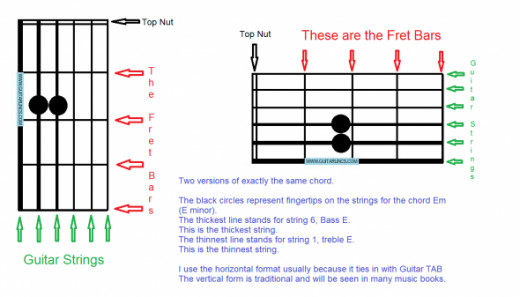
This is a comparison of chord boxes to help you if you are unfamiliar with the more modern horizontal chord box shapes. I use them simply because they relate to TAB much better than the traditional boxes do. Also I use lines of varied thickness to help beginners differentiate between the strings.
Basic chords
Learning basic chords on guitar
Learning to improvise means you need to understand chord shapes as well as scale shapes. For the purpose of this page, please make sure you can play Em, G, Am, and C at least. You will see why this is important in a minute and a little bit of preparation goes a long way to understanding how to improvise.
Click on the letters to see the chord:
Building the Pentatonic Scale in Open Position - The scale built from Em and G chords
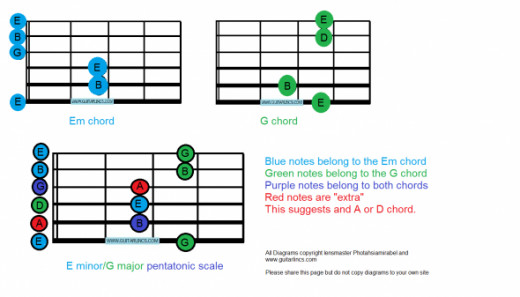
Pentatonic is a big word that simply means that there are five DIFFERENT notes in the scale.
These notes are E, G, A, B, D for Em pentatonic (1, 3, 4, 5, and 7 if you know the Nashville system)
For G major pentatonic they are G, A, B, D, E (1, 2, 3, 5, 6 in the Nashville system)
If you look carefully at my combined scale you will see that the two scales fit together into one box, the colours illustrate the chords notes belong to and the only outside note is A. You would play A where a D chord occurs or perhaps an A or Am in this key.
How to improvise guitar
Learn to play simple lead guitar
At its most basic, improvising is easy. It is about taking a snapshot of the notes you might find in a couple of chords and then playing with single notes and part chords from within that box. Knowing the notes or the scale degrees will help you though because cetrain notes need to be played and returned to more often than others to anchor you in the right sound for those chords (anchor you in the "tonality" or give a sense of the "right key") If these words are totally strange, don't worry, you don't need to know all the parts of an engine to drive a car!
If playing "in E minor" your most important or anchor notes will be E and B - you will find those letters on the diagram. Keep returning to those notes, start with short phrases of maybe 5 or 6 notes only in a nice rhythm and make short tunes.
In "G major" the most important notes will be G and D.
If you know Nashville or music theory those notes correspond to 1 and 5 or tonic and dominant degrees of the scale.
Once you have come up with lots of little "licks" or tunes, team up with a friend, one of you can play chords and the other can "noodle" with the notes. You are now playing lead at its most basic.
Try these chord progressions:
Em / / / | G / / / | Em / / / | G / / / | D / / / | G / / / | D / / / | Em / / / ||
G / / / | Em / / / | G / / / | Em / / / | D / / / | Am / / / | D / / / | Em / / / ||
Improvising for Beginner Guitarists - A selection of good books for beginners
Improvising in Am and C open position - How the Am or C pentatonic scale is built
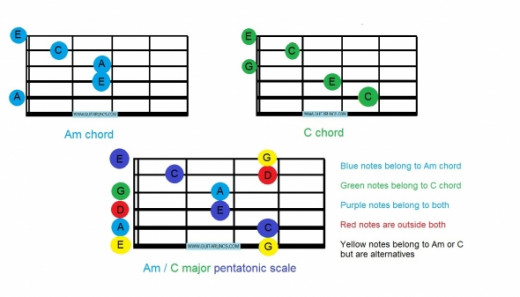
Just as we did for the Em and G box, we can work with the Am and C pentatonic box making up short "licks" or tunes. In A minor, the anchor notes will be A and E and in C major they will be C and G. D is the outside note which will fit with a G or D or Dm chord. Work with the chords first if they are new to you.
Progressions to play with:
Am / / / | G / / / | Am / / / | C / / / | Am / / / | G / / / | Em / / / | Am / / / ||
C / / / | Em / / / | C / / / | Am / / / | D / / / | Am / / / | G / / / | C / / / ||
Improvising is not a cop out!
Improvising and songwriting are inseparable.
I came across a teacher on my travels who was telling young children that improvising is "For people who can't play the actual solos in the music" This is not correct. Improvising is at the root of all blues, jazz, rock and pop music. If you learn to improvise you can make your own solos and songs up! It is essential to jazz musicians! If all you want to do is play other people's music then perhaps it is not necessary, but it is fun and why not learn to do both? All great musicians can perform existing music and make up their own too. It is your right to learn all the skills you need and I hope this first lesson has been helpful to you!
Should I learn to improvise guitar or read notes?
A well rounded musician should be able to do both. For those skilled in the theory who find it all a bit daunting, I hope this page helps bring you back to basics and see it really is a lot less complicated than you think. For beginners, I hope you enjoy just playing around with the chords and shapes here. a visual understanding of the fretboard is the most important skill to learn if you want to play lead.



